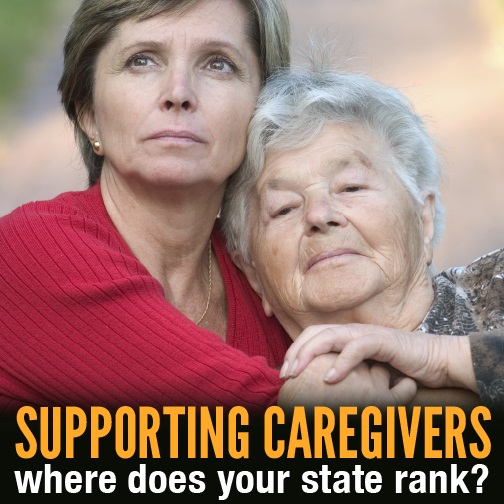AARP Hearing Center

Raising Expectations 2014: A State Scorecard on Long-Term Services and Supports for Older Adults, People with Physical Disabilities, and Family Caregivers – an update of the inaugural 2011 Scorecard – ranks each state overall and within 26 performance indicators along five key dimensions: affordability and access (49); choice of setting and provider (48); quality of life and quality of care (42); support for family caregivers (28); and, effective transitions (50). New indicators this year include length of stay in nursing homes and use of anti-psychotic drugs by nursing homes, raising serious concerns about the quality of institutional care.
“The vast majority of older Mississippians want to live independently, at home, as they age – most with the help of unpaid family caregivers,” says Sherri Davis-Garner, State Director of AARP Mississippi, which serves more than 275,000 members age 50 and older in the state. “Even facing tight budgets following the Great Recession, most states made clear progress to help older residents achieve that goal. It’s time for Mississippi to step up to the plate, and this Scorecard shows what we have to do. We don’t have time to stand idle any longer.”
Today, unpaid family caregivers provide the bulk of care for older Mississippians, in part because the cost of long-term care remains unaffordable for most middle income families. In Mississippi, more than 565,000 residents help their aging parents, spouses and other loved ones stay at home by providing assistance with bathing and dressing, transportation, finances, complex medical tasks like wound care and injections, and more. The value of this unpaid care totals about $5,200,000.
“When it comes to helping older Mississippians live in the setting of their choice, this silent army of family caregivers assumes the lion’s share of responsibility,” explains Davis-Garner. “Many juggle full-time jobs with their caregiving duties; others provide 24/7 care for their loved ones. With every task they undertake, these family caregivers save the state money by keeping their loved ones out of costly nursing homes – most often paid for by Medicaid. They have earned some basic support.”
According to the state Scorecard, many family caregivers face a degree of stress and worry. Mississippi has an opportunity to take action to improve legal and systems supports for caregivers.
That’s why AARP Mississippi successfully fought for passage of the Uniform Adult Guardianship and Protective Proceedings Jurisdiction Act making it easier for caregivers to assist loved ones across state lines. AARP Mississippi also successfully worked with legislators to pass a Caregiving Resolution to establish an Ad Hoc Committee to Study Issues Relating to Family Caregivers and Long-Term Care Services.
The single strongest predictor of a state’s long-term care system is the reach of its Medicaid long-term care safety net. That’s why AARP is also fighting to expand services provided at home and in the community, by shifting funds away from more expensive nursing home care. The Scorecard highlights serious concerns about institutional care in Mississippi, such as pressure sores and use of antipsychotic medication.
Unfortunately, Mississippi ranks #45 in increasing the percentage of Medicaid long-term care dollars that support care provided at home and in the community – the care setting that most Mississippians prefer. The Scorecard spotlights significant areas that call for improvement, including choice of setting and provider; quality of life and quality of care; and effective transitions.
Specifically:
· 19 percent of Medicaid and state-funded LTSS going to HCBS
· 16 percent of nursing home residents with low care needs
· 7 percent of people with 90+ day nursing home stays successfully transitioning back to the community
“This Scorecard gives us a snapshot of how well Mississippi serves our older residents, those with disabilities, and family caregivers – and shows us that we must sharpen our focus to better assist hardworking Mississippians,” concludes Davis-Garner. “Now is the time for policymakers to act.”
Of the 26 Scorecard indicators, 13 may be improved through state policy changes, pointing to the importance of AARP’s multi-state advocacy campaign, launched this year, to help older Americans live independently, at home, and the family caregivers that support them.
The Scorecard reveals, “In just 12 years, the leading edge of the Baby Boom Generation will enter its 80s, placing new demands on a still imperfect long-term care system. Further, this generation will have far fewer potential family caregivers to provide unpaid help.
Long-term care (also called long-term services and supports) is a diverse set of services designed to help older people and those with disabilities. Services can be provided in a person’s home, in a community setting such as an adult day center, or in a group residential facility like a nursing home.
The full state Scorecard, along with an interactive map of state rankings and information, is available at www.longtermscorecard.org.
# # #
About AARP: AARP is a nonprofit, nonpartisan organization, with a membership of nearly 38 million, that helps people turn their goals and dreams into real possibilities, strengthens communities and fights for the issues that matter most to families such as healthcare, employment and income security, retirement planning, affordable utilities and protection from financial abuse. We advocate for individuals in the marketplace by selecting products and services of high quality and value to carry the AARP name as well as help our members obtain discounts on a wide range of products, travel, and services. Learn more at www.aarp.org.































































